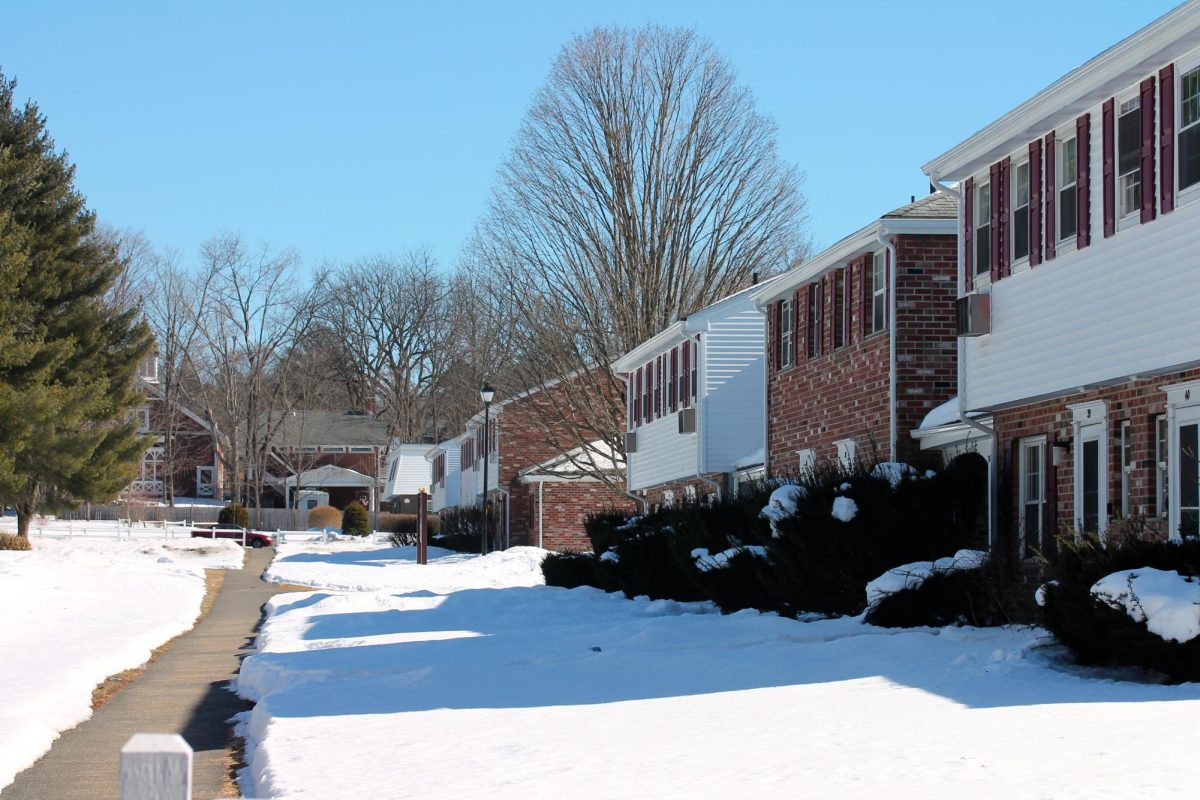Ware students stand shivering in the morning twilight at 5:45 a.m., waiting for a bus to take them to schools in the Quabbin Regional School District, 12 miles away in Barre, Mass. A lack of funding in the Ware public schools has caused many fretting parents to look elsewhere for their children’s education‑- even if it means an hour less sleep.
But School Committee Chairman Christopher Desjardins blames poor marketing for Ware’s scholastic unpopularity over any other reason.
As a result, he and other committee members are attempting to hoist Ware schools out of the mire with radical–if not hacking–logic: change the school choice-law in Massachusetts which allows parents to send their children to schools in other towns, the Springfield Republican reported.
The law, which was passed in 1991, is one of convenience. But for Ware, school-choice has turned education into a financial competition between neighboring schools, and it seems to be losing.
Last year, according to the Republican, Ware witnessed an exodus of 159 students to the Quabbin Regional School District in Barre. Ware would have received $5,000 in state aid for each student, amounting to some $857, 780. But state-aid accompanies students to whichever school their parents choose for them to go, regardless of where they actually live. There lies the controversy and dilemma.
According to the Massachusetts Department of Elementary and Secondary Education web site, Quabbin regional school district received 407 students from surrounding communities and $2.2 million in state aid.
While 24 students did come into Ware’s district last year, bringing with them $167,391 in state assistance, the trend is painfully apparent.
Only 438 students attend Ware High School, with a teacher-student ratio of 1:17; at Quabbin Regional there are 1,014 students, with the same ratio.
Thirty-six percent of Ware High students receive some form of discounted lunch, while only 10 percent of Quabbin Regional students do. The median income of a Quabbin Regional student’s household is nearly $13,000 more than a student at Ware High.
Whether parental alarm owes to a crumbling Ware school district or to a “keeping up with the Joneses” mentality is unclear; but if the profile of Quabbin Regional High is any indication, the downtrend will probably continue for Ware schools.
Of course, the demographics don’t tell of a weak infrastructure in Ware High School; in fact, parent reviews of each school are about equal, according to greatschools.org. But for parents hesitating between the two, the profile of Quabbin Regional would likely clinch their decision.
Despite the grim statistics, Desjardins believes that Ware schools aren’t any worse than Quabbin ones. His message to parents is clear:
“They have to get on a bus at 20 of 6 (in the morning), and they get no better education than they could get here,” he told the Springfield Republican.
In an attempt to tether students to local schools, Ware has added music programs at middle and high school levels and extended communication with parents.
But with dwindling resources, Ware schools can only do so much. That’s why Desjardins asked School Committee Representatives from Easthampton, Southwick, North Brookfield and Greenfield to support their case against the school-choice law.
“We’ve done pretty much all we can marketing-wise, now we need to start thinking about something with the law. It’s going to be a bear of a fight,” Desjardins said.
Desjardins knows that his committee has a long shot at the school choice law. He and other supporters hope that Ware’s cry for help will at least lead to a revision in the law, which might alleviate some of the financial burdens on towns like his.
But no amount of money can efface the reputation Ware High School will have if another 159 students leave next year. The drop off rate from grade 8 to grade 12 already sways close to 50 percent, with only 65 seniors in a class once 120 strong.
No amount of poster-boarding or teary-eyed PTA’s will rake in students to schools that have been branded as discreditable by the omniscient parental majority.
So what happens to Ware students who can’t make it to Quabbin Regional schools? Do they get stuck sharing books and a bad reputation?
Not necessarily. If Ware parents keep sending their kids to local schools, money and confidence will return-like the stock market. But students leaving Ware High leave it more cash-strapped and bereft of aplomb than it already was.
If it’s just a matter of marketing like Desjardins says, Ware can afford to run out this rough patch in the road. If it’s something more, the school committee will be receiving a lot of angry phone calls.
Evan Haddad is a Collegian columnist. He can be reached at [email protected].







westholme hoist hire • Feb 18, 2010 at 7:42 am
Interesting, I have not heard about this…